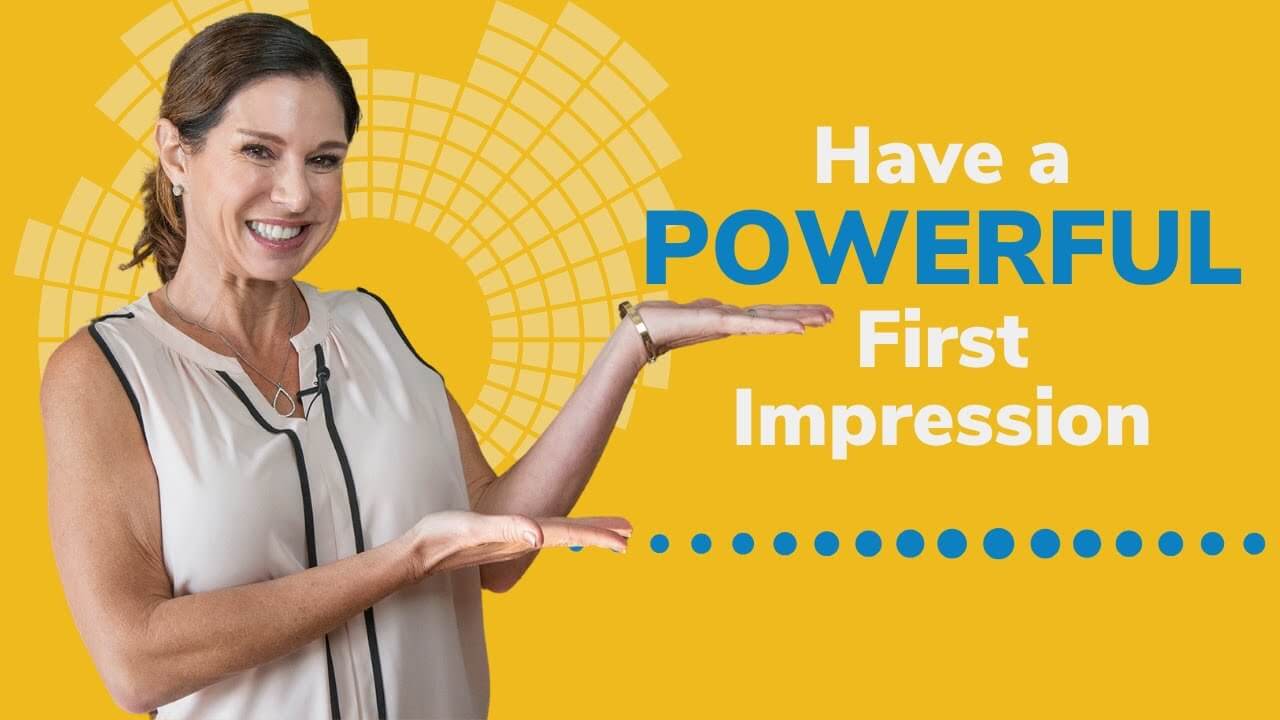Studies show that audiences form a first impression within the first 7 seconds of your presentation.
Are you ready to make a good first impression?
Stay tuned and we’re going to talk about that next in our Moxie Talk blog.
—
INTRODUCE YOURSELF WITH IMPACT
Hi everyone, I’m Fia Fasbinder, welcome to Moxie Talk, where we help you find your voice, share your message, and lead with confidence.
Today, we’re talking about ways to make a confident first impression when you introduce yourself in your presentation.
Ways to Make a Confident First Impression
I have a feeling some of these techniques might help you introduce yourself confidently at those holiday parties that are coming up—socially distanced of course!
First 7 Seconds
Now, most people don’t know that the first 7 seconds is when an audience is deciding if they trust you, if they want to listen to you, if you are an authority in your field, and if you’re interesting and engaging.
If you think about the first 7 seconds of your presentation, it is mostly non-verbal. It’s when you’re walking onto the stage, you’re crossing to the center of that boardroom or you’re standing and being introduced and the audience is looking at you. So we have to make sure that our body language is confident within that first 7 seconds because they’re highly non-verbal.
Confident Body Language
How do you have confident body language in your presentation?
Well, the other studies show that if we expand our chest cavity instead of closing in, audiences will find us to be confident. If you think about this, when people are scared they close in. They make their bodies small. Simply by relaxing our shoulders and making sure we’re standing tall, we can give that impression of confidence.
The other important technique to remember if you’re going to convey confidence in the first 7 seconds is to:
Smile and Make Eye Contact
Now a saying I like is The Happy Warrior.
The happy warrior is a combination of strength and warmth that makes people see you as a leader. If you think about this, a happy warrior can be achieved in so many different ways – the way we hold our body, the way we use our voice, and our content.
Now, Amy Cuddy who is a thought leader in the happy warrior wrote an amazing paper called
Connect, Then Lead
According to Amy Cuddy, you need to:
- Lead-in with warmth, and
- Follow with strength
How do you do this? How do you lead in with warmth and make an audience really connect with you within that first 7 seconds?
With confident body language, warmth comes from your smile and your eye contact with the audience. Then you can follow with strength. Where does the strength come from? This is when you as a subject matter expert can really hit your point home.
Now, most people when they introduce themselves in a presentation start with listing off their credentials and then they list off their topic. So a long list of credentials and then the what?
Here’s what Moxie suggests: Instead of leading with this long list of credentials and then giving them the “What?” which is your topic, lead in with warmth, with that smile, with that enthusiasm, with that passion, and then:
Hit Them With the “Why?”
Why should they care about this presentation? Why should they keep their butts in their seats? What’s going to be interesting about this presentation to them? What is going to be the main takeaway? Tease them with that and then give them the what, then give them the topic. This is a really different way than most of us do, right?
Most of us kind of come into our presentations looking down because we’re thinking about our topic. Now instead of doing that, you’re gonna lead in, look at your audience, hit them with some great eye contact, a great smile, let them know that you’re happy to be there, and then let them know why they should care about this presentation.
After you’ve done that, you can lead into the presentation itself which is really where that strength comes in. So now we’re connecting and then we’re leading. We’re giving them warmth, and then we’re giving them the strength.
Connecting, Then Leading
You know, giving an introduction is really important, besides those first opening seconds, because this is when you really set the foundation for the rest of your presentation.
Once you’ve given them the why, you might want to think about:
Hooking an Audience
Hooking an audience means you’re giving them something interesting, something engaging, something different so that they know that you care and that you have thought about this presentation—you’ve thought about ways to engage them, you have some interesting content, and they should stay for the rest of the presentation.
If you want more techniques to hook an audience, I did a great video about how to hook an audience a couple of weeks ago. You can find it on our YouTube channel and below. We’ll go over the PUNCH acronym, which is an acronym for different ways to hook an audience.
So remember next time you’re at a holiday party, next time you’re giving a presentation, make sure to
Connect, Then Lead
Thanks so much for reading, everyone. Stay tuned for the next blog.
If you like this blog, make sure to share it with friends and subscribe to our newsletter and YouTube channel.
For more information, check out our Moxie website or book a call!









